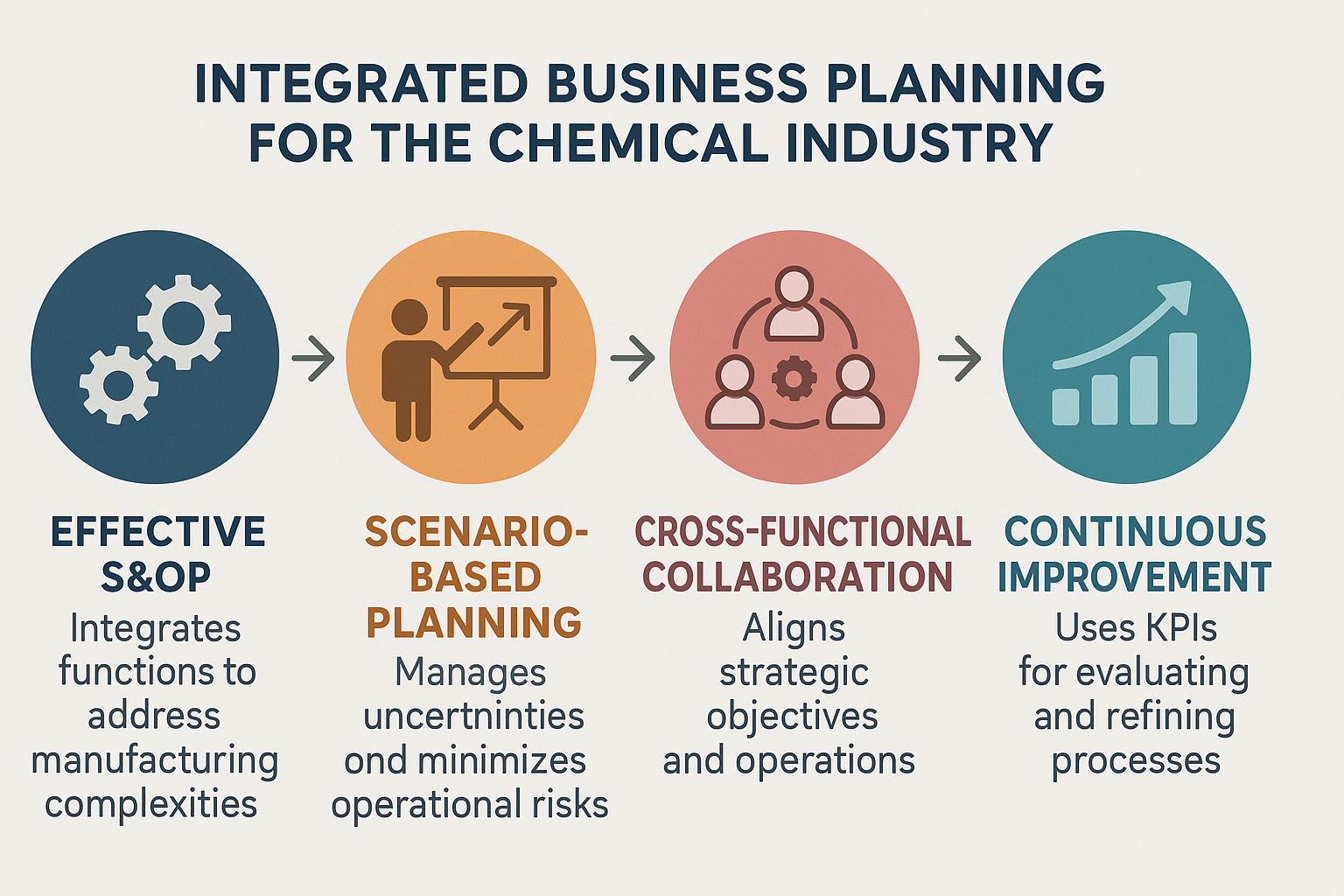Lesson Title: Sales and Operations Planning (S&OP) in the Chemical Industry
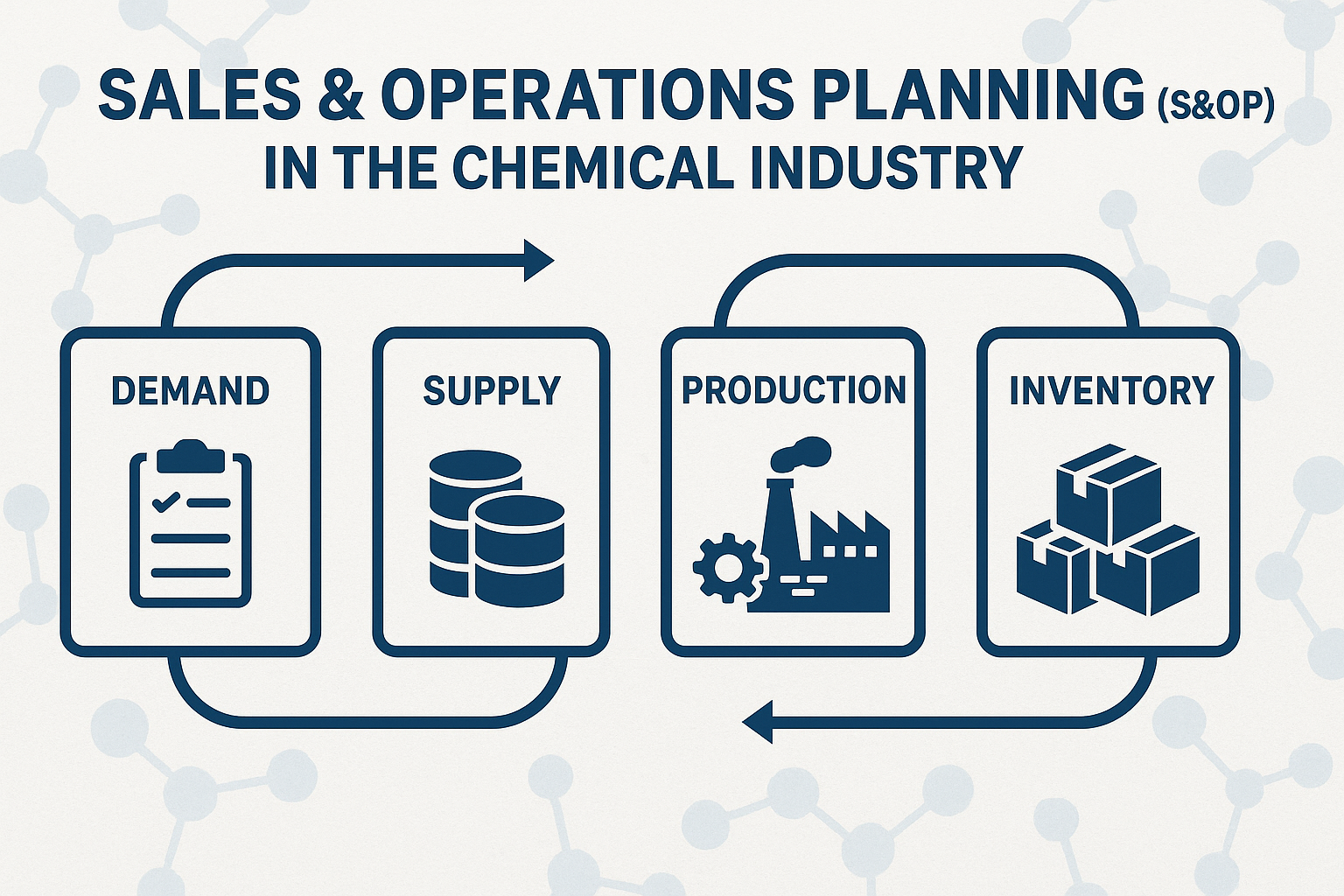
Lesson Description:
Sales and Operations Planning (S&OP) in the chemical industry integrates various organizational functions—production, sales, finance, and supply chain—to balance customer demand, production capabilities, and financial objectives. Effective S&OP processes help chemical companies manage uncertainty, optimize resources, reduce waste, and enhance customer satisfaction through coordinated, scenario-based planning and decision-making.
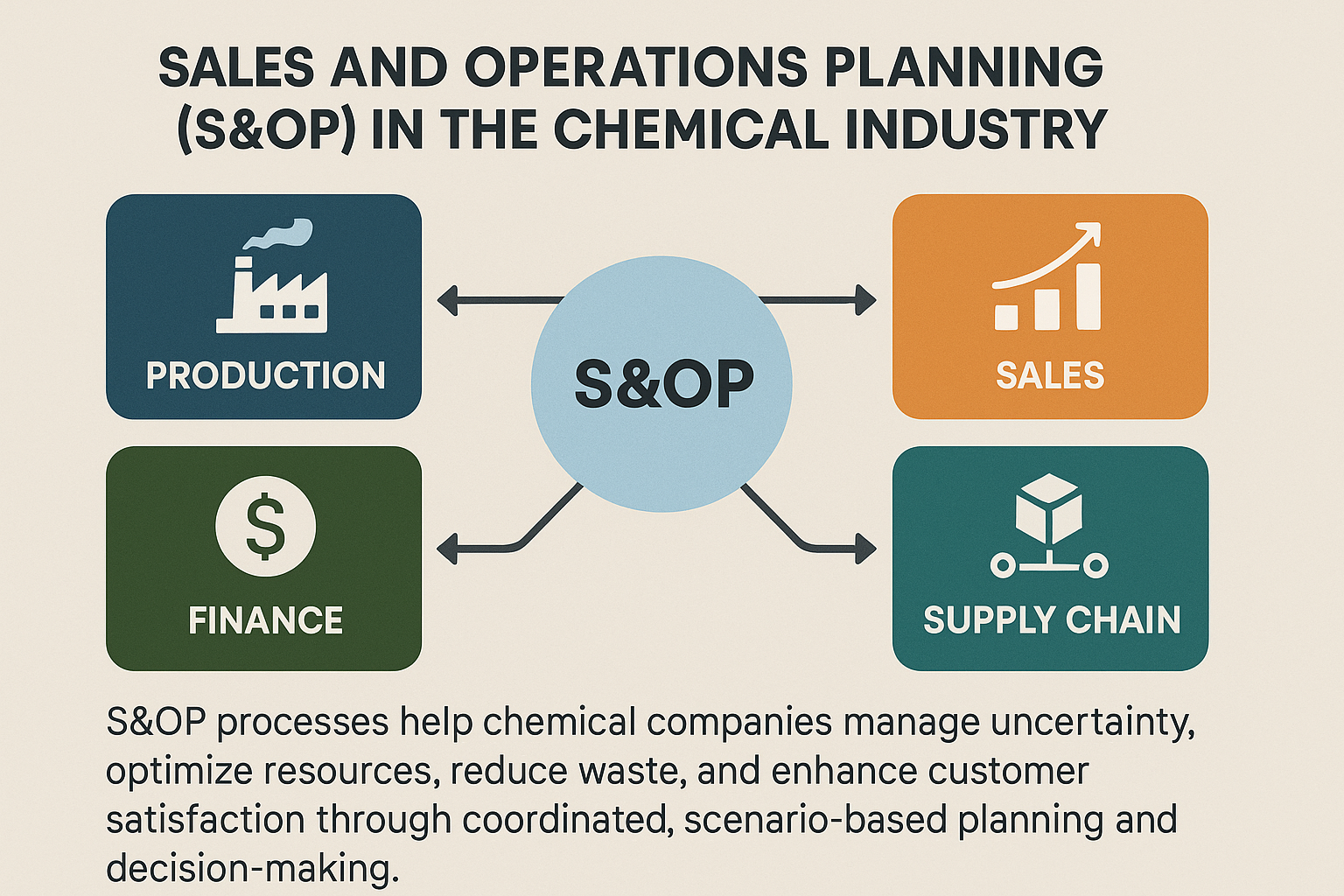
Lesson Learning Objectives:
By the end of this lesson, participants will be able to:
-
Explain the critical role of S&OP in aligning different business functions within chemical companies.
-
Describe the steps involved in the S&OP process specific to the chemical industry.
-
Utilize scenario-based planning to anticipate and effectively respond to market and operational uncertainties.
-
Understand the integration of S&OP with financial and strategic goals through Integrated Business Planning (IBP).
Lesson Key Points:
-
S&OP Importance: Critical in the chemical industry due to long production cycles, batch manufacturing, and high-capital operations, enabling precise coordination across departments.
-
S&OP Process Steps: Demand review (forecast alignment), supply review (capacity assessment), and executive review (strategic reconciliation).
-
Scenario-Based Planning: Planning for various market scenarios, such as demand fluctuations and cost volatility, enhancing proactive decision-making and responsiveness.
-
Cross-Functional Collaboration: Essential sharing of information among sales, marketing, production, finance, and supply chain teams, ensuring comprehensive and accurate planning.
-
Integrated Business Planning (IBP): An evolved form of S&OP linking operational plans directly with financial outcomes and long-term strategic considerations, such as product innovation and sustainability.
-
Best Practices:
-
Strong cross-functional involvement
-
Scenario planning for market volatility
-
Strategic and financial alignment
-
Executive commitment and active participation
-
Continuous performance monitoring and improvement through KPIs
-
-
Operational Agility: Mature S&OP and IBP practices significantly improve responsiveness during disruptions, enhancing competitive advantage and customer satisfaction.
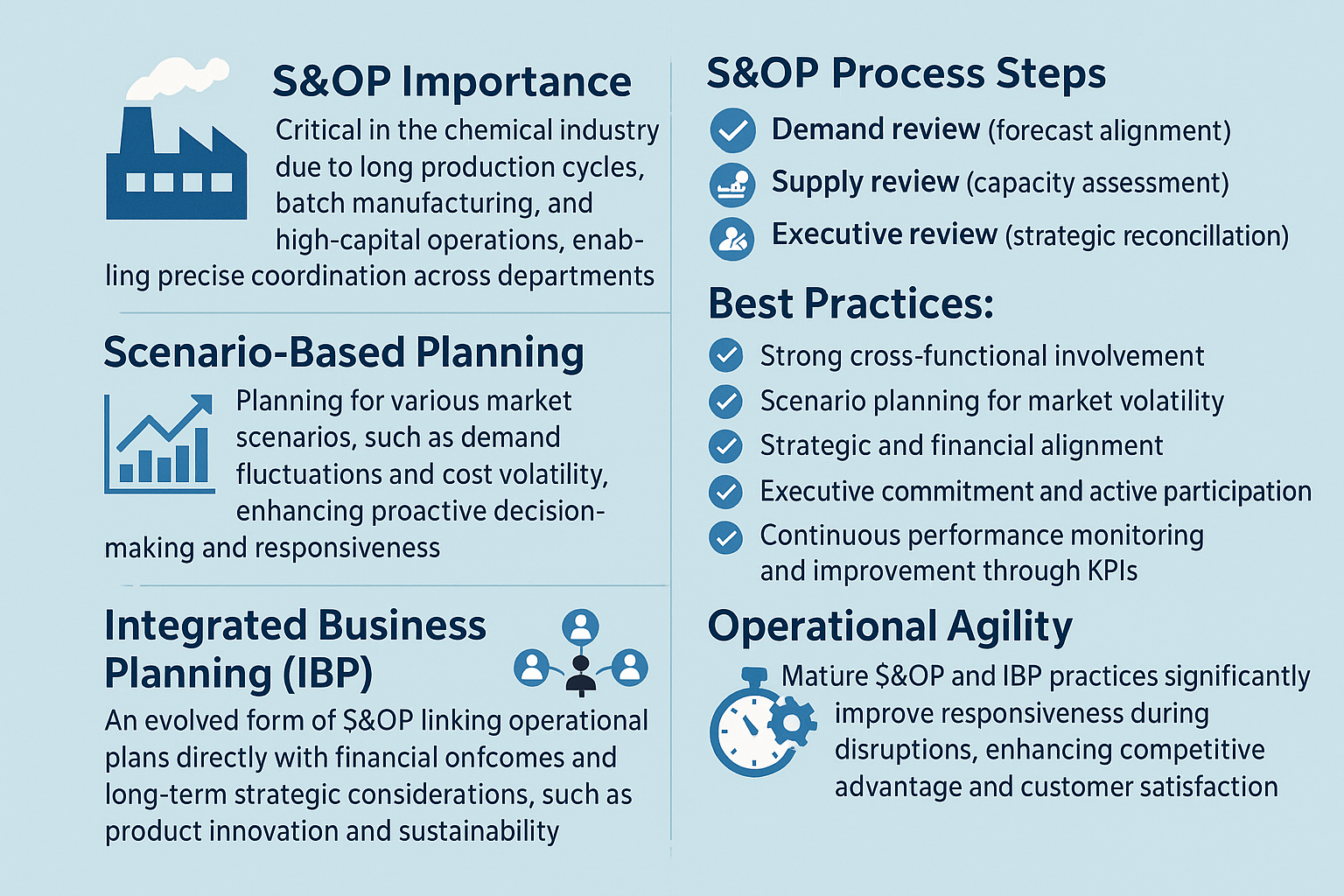
Lesson Summary:
Sales and Operations Planning (S&OP) is a foundational management process for chemical companies, effectively aligning multiple organizational functions—sales, production, finance, and supply chain—into a unified operational strategy. Due to the industry’s inherent complexities, such as extended production cycles, batch processing, high capital investments, and significant resource commitments, S&OP serves as an essential planning mechanism. The S&OP cycle encompasses demand forecasting, supply assessments, and executive oversight to reconcile strategic business goals and market realities. Advanced scenario-based planning methods enable chemical companies to anticipate market changes, adapt quickly to external disruptions, and proactively manage operational risks. Comprehensive cross-functional collaboration and executive engagement underpin successful S&OP implementations, ensuring alignment with both immediate operational needs and long-term financial and strategic objectives.
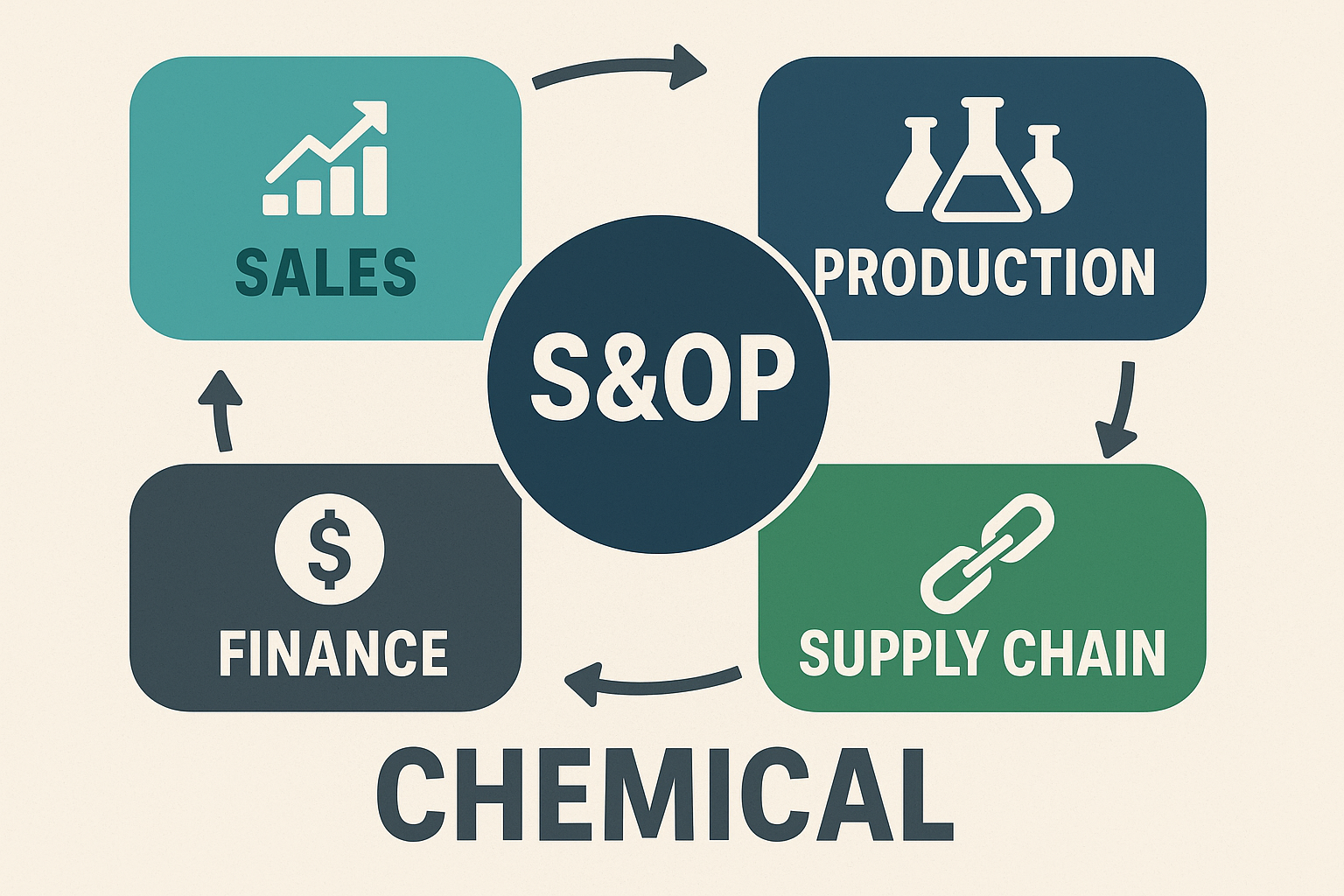
Lesson Takeaways:
-
Effective S&OP integrates all key organizational functions to address the unique complexities of chemical manufacturing, such as lengthy production processes and substantial capital expenditures.
-
Utilizing scenario-based planning within S&OP equips chemical companies to proactively manage uncertainties, respond effectively to disruptions, and minimize operational risks.
-
Cross-functional collaboration, combined with robust executive involvement, is critical in aligning strategic objectives and operational realities, ensuring efficient decision-making and resource optimization.
-
Integrated Business Planning (IBP) extends S&OP by explicitly linking operational plans to financial and strategic outcomes, significantly improving organizational agility, profitability, and market responsiveness.
-
Continuous evaluation, performance tracking, and refinement of S&OP processes through relevant KPIs drive sustained improvements, enabling chemical companies to maintain competitive advantage and achieve consistent customer satisfaction.
